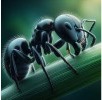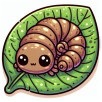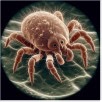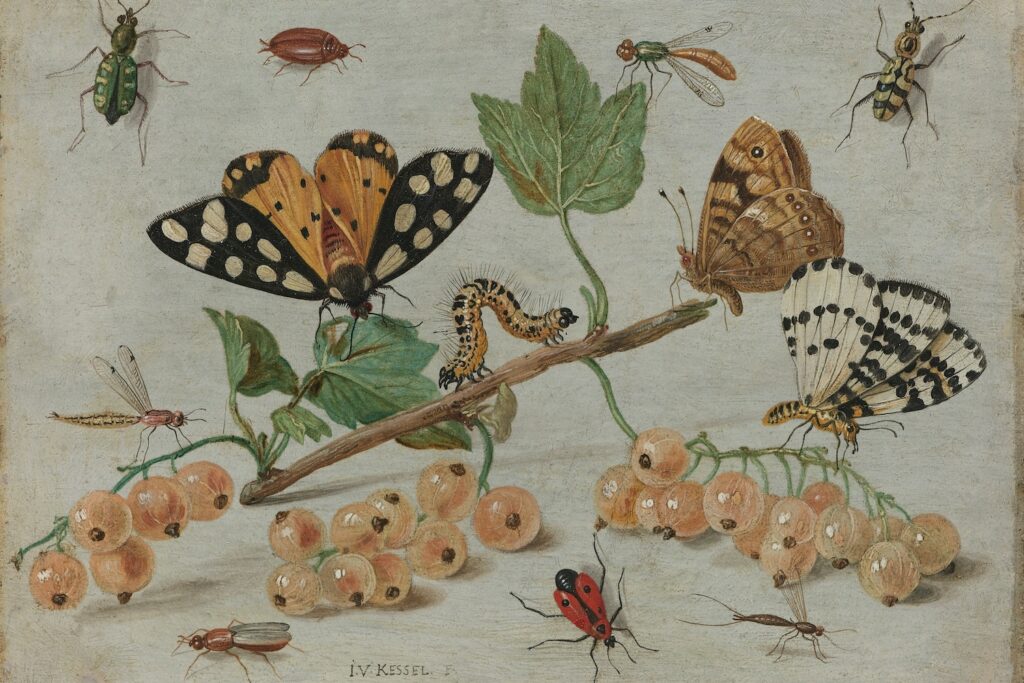Learning Insects with AI and Generating Core Memories to Help Heal Childhood Trauma
by Nora Cryder, Franklin College
This study explores the potential role of Artificial Intelligence (AI) in memory retrieval and its application in processing childhood trauma. Grounded in the belief that memory is often tied to sensory experiences, the research combines technological tools with personal reflection to investigate how AI can support the uncovering of suppressed or fragmented childhood memories. The study involved collecting and closely examining five different insects, chosen due to their ability to evoke strong sensory and emotional reactions rooted in early experiences. AI was utilized to identify each insect and generate contextual information, which was then compared against personal recollections and associations from the researcher’s own childhood.
This process revealed that interacting with tangible, sensory-rich stimuli—such as insects—can indeed act as powerful memory triggers. The AI served not as a primary tool for memory recovery but rather as a reflective companion, offering external structure and factual grounding that helped clarify and contextualize emerging memories. While the technology did not directly facilitate trauma resolution, it supported a reflective space where emotions and memories could surface more organically. These findings suggest that AI, when combined with personal narrative and sensory engagement, may offer a meaningful framework for exploring the psychological layers of memory and trauma. However, its use should be viewed as complementary rather than standalone in therapeutic or introspective contexts.
memory retrieval, artificial intelligence, childhood trauma, sensory triggers, AI-assisted research, insect study
Essential Question
How can I gain particular information with AI that will help generate core memories for healing childhood trauma?
Introduction
This study focuses on collecting and studying insects, resurfacing memories, healing childhood trauma, and testing Artificial Intelligence’s (AI) abilities based on five different insects. The goal of this study is to channel core memories that will help heal childhood trauma. I used a bug catcher kit with a bug “gun” to trap the insects and a small box for their habitat. I recorded any memories triggered by each insect while asking AI for identification and information, evaluating its “memory.”
Why Bugs? Why Trauma?
Growing up, I have always had a complicated relationship with my childhood memories—some are vivid, while others feel distant or completely inaccessible. I have often wondered why certain moments stick with me while others fade into a blur. This curiosity led me to explore ways to trigger forgotten memories, particularly those that might be connected to childhood trauma.
I chose bugs as the focal point of this study because they were a constant presence in my childhood. Whether it was playing in the yard, encountering ants, or being warned about certain insects, they were a sensory trigger—something I could physically see, touch, and interact with. While I do not consciously associate insects with trauma, they are linked to childhood experiences that feel just out of reach. I wanted to see if directly engaging with them—catching them, studying them, and asking AI about them—could bring back memories I might have buried or forgotten.
Defining Trauma in My Context
When I refer to trauma, I’m not necessarily talking about major life-altering events (though those can be part of trauma). Rather I am discussing the small, lingering moments that shaped my sense of self—times of uncertainty, change, or even fear. Trauma is often categorized as “big-T” trauma, which refers to severe traumatic events such as abuse or loss, and “small-t” trauma, which includes less extreme but still distressing experiences (American Psychological Association [APA], 2020).
For example, I remember being bitten by ants as a child, running inside, and leaving my shoes behind. I don’t recall everything about that day, but I do remember how it made me feel—surprised, scared, and alone. What other memories might be hidden beneath experiences like this?
Memory Retrieval Through Sensory Triggers
Psychologists suggest that sensory experiences—like smells, sights, and textures—can unlock suppressed or forgotten memories. This is known as context-dependent memory retrieval (Tulving & Thomson, 1973). This is why a certain smell can instantly transport someone back to their grandmother’s house or why an old song can evoke strong emotions.
I wanted to test whether interacting with insects, something deeply embedded in childhood exploration, could do the same for me. AI played a role in this as well. By providing detailed descriptions of each bug, AI prompted me to reflect on my own experiences, helping me remember moments I hadn’t thought about in years.
Scope of Work
| Insect | Scientific Name | Date | Time |
| Black Pavement Ant | Tetramorium caespitum | 04/1 3 | 3:28 pm |
| Pill Bug | Armadillidium vulgare | 04/1 3 | 4:18 pm |
| Red Spider Mite | Tetranychus spp. | 04/1 6 | 2:11 pm |
| Gnat (No-see-ums) | Culicoides sonorensis | 04/1 7 | 6:33 pm |
| Palmetto Bug (American Cockroach) | Periplaneta americana | 04/1 8 | 8:46 pm |
Insect Observations and AI Findings
Black Pavement Ant (Tetramorium caespitum)

AI Information
- Habitat: Found in urban areas, nesting in soil, under rocks, and in pavement cracks (Edwards, 1986).
- Diet: Omnivorous, consuming insects, seeds, honeydew, and food scraps (Smith & Whitman, 1992).
Childhood Memory Association
I recall sitting in my childhood backyard cutting grass with scissors. One day, I unknowingly sat in an ant pile and was bitten. I remember running inside, leaving my shoes and socks behind.
Pill Bug (Armadillidium vulgare)

AI Information
- Taxonomy: Crustacean, not an insect, related to shrimp and crabs (Schmalfuss, 2003).
- Behavior: Nocturnal, rolls into a ball for protection.
Childhood Memory Association
As a child, I enjoyed digging up and playing with roly-polys in the sandy backyard near my dad’s boat.
Red Spider Mite (Tetranychus spp.)

AI Information
- Agricultural pest (Jeppson et al., 1975).
- Feeds on plant sap (Helle & Sabelis, 1985).
Childhood Memory
Reminded me of chiggers. I ignored my grandfather’s advice about bug spray and suffered intense itching for a week.
Gnat (Culicoides sonorensis)

AI Information
- Blood-feeding midge (Borkent, 2005).
- Common in humid environments (Mullen & Durden, 2009).
Childhood Memory
Summers in Georgia, hunting and fishing with my dad, always surrounded by these annoying bugs.
Palmetto Bug (Periplaneta americana)

AI Information
- Large cockroach, thrives in warm, humid areas (Cornwell, 1968).
Childhood Memory
Waking up in my dad’s camper to a Palmetto Bug crawling on my forehead.
Final Thoughts on AI’s Role in Memory Retrieval
This study revealed that interacting with insects—through catching, observing, and researching them—acted as a meaningful sensory trigger that helped surface long-forgotten childhood memories. AI played a significant but secondary role. While AI did not directly retrieve memories, its detailed descriptions and generated images often jogged associations or emotions I had not consciously connected to those insects before. For example, seeing an AI-generated image of a Palmetto Bug reminded me of a startling experience in my dad’s camper—something I had not thought about in years.
Rather than serving as a direct tool for trauma resolution, AI functioned more like a mirror, reflecting back information that I could then interpret through a personal, emotional lens. The process created space for reflection and self-inquiry, which can be an important first step in healing. This method helped me uncover core memories that were previously fragmented or buried, offering insight into how everyday sensory experiences can resurface formative moments—even those tied to subtle or “small-t” trauma.
While this project did not offer a comprehensive solution to trauma recovery, it opened up a pathway: a low-stakes, creative, and deeply personal form of memory work. Future studies could explore how AI, paired with other sensory triggers such as smells or ambient sounds, might help individuals reconstruct memory landscapes with more clarity or emotional resolution. This approach—combining AI and embodied experience—holds promise for further therapeutic exploration, especially in understanding how memory, emotion, and digital tools intersect in our search for healing.
References
Edwards, J. P. (1986). The foraging behavior of the pavement ant Tetramorium caespitum. Journal of Insect Behavior, 3(1), 45-53.
Schmalfuss, H. (2003). The terrestrial isopods (Crustacea: Isopoda) of the world. Stuttgarter Beiträge zur Naturkunde, 654(1), 1-459.Smith, M. R., & Whitman, R. C. (1992). Ants of North America: A Guide to Genera. University of California Press.
Tulving, E., & Thomson, D. M. (1973). Encoding specificity and retrieval processes in episodic memory. Psychological Review, 80(5), 352-373.
Citation Style: APA7
